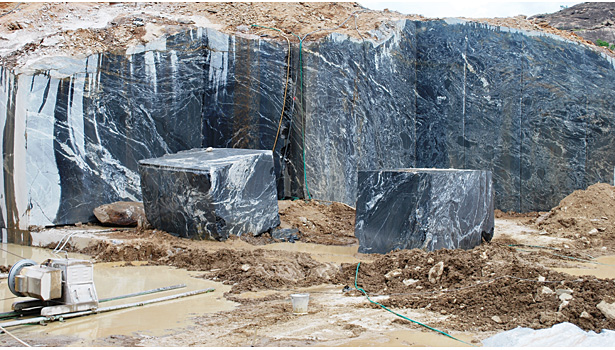Journeying With Granite Quarries in South Africa: A Visual Odyssey
Journeying With Granite Quarries in South Africa: A Visual Odyssey
Blog Article
Uncovering the Rich History and Sustainable Practices of Granite Quarrying
As we base on the precipice of uncovering the elaborate tapestry of granite quarrying, a journey via time exposes not just the physical act of extracting stone but likewise the social and historical value woven into the extremely fabric of this practice. From the old beginnings that laid the foundation for modern quarrying strategies to the lasting practices that are shaping the future of this industry, each carve mark on granite surfaces narrates waiting to be uncovered (granite quarries in south africa). The heritage of granite quarrying stretches far past plain removal; it is a testament to human ingenuity, resilience, and the enduring attraction of this impressive stone
Ancient Beginnings of Granite Quarrying
Dating back to old civilizations, the technique of quarrying granite has been an essential part of human background and building development. The earliest proof of granite quarrying go back to ancient Egypt, where massive pyramids and intricate sculptures were crafted from this durable rock. The Egyptians used primitive tools to extract granite blocks from quarries, showcasing the significance of this material in their huge constructions.
Moving on in background, the Greeks also made considerable contributions to the quarrying of granite. The Greeks made use of granite in different building wonders, such as holy places and statues, showing their skill in shaping and sculpting this hardy stone. The Romans additionally refined the strategies of quarrying granite, employing innovative tools like knives and hammers to extract and form granite for their legendary structures.
With the centuries, the technique of quarrying granite has actually evolved, with modern-day technologies boosting performance while preserving the classic charm of this natural stone - granite quarries in south africa. From old civilizations to modern builders, the legacy of granite quarrying remains to form our world
Evolution of Quarrying Strategies
The development of quarrying strategies has actually been marked by a continual development towards greater effectiveness and precision in removing granite. Early quarrying techniques entailed hands-on labor with fundamental devices such as blades, hammers, and wedges to remove granite blocks from the planet.
In more current times, the development of equipment reinvented the quarrying sector, making it possible for much faster extraction rates and raised performance. Technologies such as ruby cord saws, high-pressure water jets, and pneumatic drills have actually come to be conventional in modern-day quarries, enabling precise cutting and reduced waste. Improvements in computer-controlled tools and 3D modeling have enhanced quarrying procedures, leading to marginal ecological effect and enhanced sustainability techniques. As the More hints demand for granite continues to increase, the advancement of quarrying techniques continues to be important to meeting industry needs successfully browse around this web-site and sustainably.
Cultural Relevance of Granite
Granite holds a profound social importance throughout different civilizations as a result of its enduring presence in architectural masterpieces and revered monoliths. From the majestic pyramids of Egypt to the complex carvings of the Angkor Wat temple in Cambodia, granite has actually been a product of choice for expressing majesty and longevity in cultural heritage. In ancient Rome, granite columns decorated temples and public structures, signifying strength and permanence. The cultural importance of granite expands past its physical characteristics; it personifies durability, stability, and timelessness, making it an icon of withstanding legacies and customs.

Sustainable Practices in Quarrying
In the middle of the rich background of granite quarrying and its cultural relevance exists an expanding emphasis on sustainable practices within the industry. As ecological recognition and problems about resource depletion have increased around the world, the quarrying market has increasingly embraced sustainable methods to reduce its effect on the setting and bordering neighborhoods.

Additionally, reclamation and rehabilitation of quarry websites post-extraction are important to sustainable methods. By recovering quarried locations to an all-natural or helpful state, such as producing wildlife habitats or leisure rooms, quarriers can balance out the environmental impact of their operations and contribute positively to the local community.
Tradition of Granite Quarrying
With a historic backdrop soaked in craftsmanship and industrial development, what withstanding impact has granite quarrying left on the landscape of modern-day culture? The tradition of granite quarrying goes beyond simple removal techniques; it has formed building marvels, city landscapes, and social heritage worldwide. The durable nature of granite has made it a favored choice for monoliths, buildings, and infrastructure, standing as a testimony to the ability and artistry of quarry employees throughout generations.
In addition, the financial impact of link granite quarrying can not be neglected. The sector continues to give job opportunity and drive regional economies in areas where granite removal is common. It has actually additionally spurred technological developments in quarrying techniques and tools, leading to much more efficient and lasting practices.
In terms of sustainability, the heritage of granite quarrying consists of initiatives to alleviate environmental impacts through recovery jobs and accountable resource administration. By balancing economic interests with environmental stewardship, the industry makes every effort to guarantee that future generations can remain to take advantage of this long-lasting all-natural resource.
Final Thought

Report this page